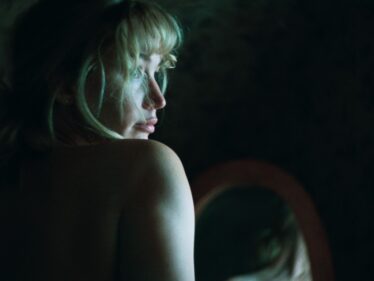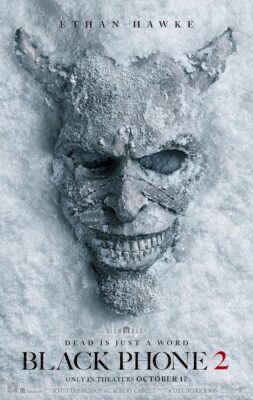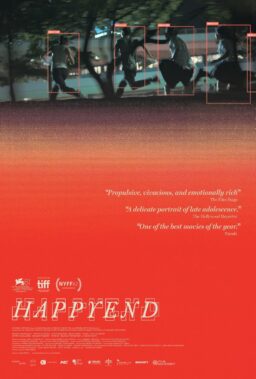Mae West, who gave her name to a life jacket and her style to an era, is dead at 88. She died of natural causes Saturday in the Hollywood apartment building she owned — in the all white, flower filled penthouse where in recent years a parade of admirers had come up to see her sometimes.
They are planning a memorial service for her Tuesday in the First Presbyterian Church in Beverly Hills, and if the minister is honest he will have to concede, of her career, that goodness had at least something to do with it.
Miss West was a Hollywood legend almost from the moment of her first movie, “Night After Night,” which was made in 1932 when she was already at least 40. She continued to play bosomy blonde sex bombs throughout the 30s, perfecting the art of erotic double meanings until she inspired a rewrite of the movie industry’s censorship standards. The last film in the heyday of her career was “The Heat’s On,” in 1943. But, incredibly, she came out of retirement in 1969 to play a recognizable version of herself, in “Myra Breckinridge,” and she made her last film, “Sextette,” only three years ago.
The image that Mae West created of herself – from a platinum wig, outrageous costume jewelry, form-fitting long dresses, platform heels, a wink and a hand on a hip – was an American original. “I became a star seen in the third person, even to myself,” she wrote in her autobiography, Goodness Had Nothing to Do With It. “It didn’t frighten me. I got fun out of being an
institution.”
It was her institutional status, perhaps, that allowed her to get away with so much in an era when Hollywood censors scanned every script. Miss West wrote many of her own screenplays and most of her own lines, and in her early films got away with murder: “Are you packin’ a rod,” she asked a gangster in one film, “or are you just glad to see me?” In her later films, censors rode herd on her dialog, but they could do nothing about the West style, which dripped sex and innuendo. Her way of walking into a room and visually sizing up a man left volumes unspoken. Her one-liners add the rest.
Miss West was fond of claiming that she brought the word “sex” to the American language: “Before I came along nobody could print the word on billboards.”
Actually, they still couldn’t after she came along; in 1926 she wrote a play titled “Sex,” and it folded after a police raid. Miss West herself was sent to jail for eight days, but established a style for herself by insisting on clean silk underwear in her cell on Welfare Island.
Miss West said she was born in 1892, and that date has been generally accepted as accurate. But on Saturday, her age was called into question by an old friend, the 84-year-old Dr. Jules Stein, founder of the MCA-Universal entertainment empire. Stein said he played the violin for Miss West’s stage act in Chicago when he was 18 and she was 26; that would have made her 92 years old. He asked her out and she turned him down, he recalled with a twinge of regret 66 years later.
Almost until the end, Miss West appeared in public in the same glamorous style. Arthur Knight, professor of cinema at the University of Southern California,
recalls her appearance at his film class only five years ago. In the platinum gown and with a USC football player on each arm. She told the students that on “Every Day’s a Holiday” (1937), “I wrote the screenplay in 57 seconds … but it took a lot longer to make the movie.” She confided that in her private life she wore jeans and a sweatshirt and worked with the horses on her ranch outside Los Angeles. But she was never, ever, photographed that way.
After a brief marriage at 17 to a song-and-dance man named Frank Wallace and an early career as a burlesque star, Broadway actress and playwright, Paramount lured Miss West to Hollywood in 1932. For her second and third films, “She Done Him Wrong” (1933) and “I’m No Angel” (1933), she personally chose the then almost unknown Cary Grant as her co-star, helping to discover and tailor the suave comic image that would make him one of Hollywood’s favorite leading men.
Her next film, “Belle of the Nineties” (1934), was the one that inspired the Motion Picture Production Code to crack down on suggestiveness.
She made only 12 films altogether, including the famous 1939 pairing with W. C. Fields in “My Little Chickadee” that included the line “Come up and see me sometime.” Fields was one of the rare co-stars who could occasionally upstage Miss West: Since they both specialized in delayed double takes, some of their scenes resembled stare-downs.
Miss West had a considerable private fortune at the time of her death, mostly in shrewd real estate investments. She lived for years in the all white
penthouse of her Ravenswood Apartments, receiving guests with her hand resting on a white grand piano that bore dozens of her photographs. She was a
physical fitness aficionado who remained in remarkably good health until she suffered a fall and concussion in August. She was admitted to Good Samaritan Hospital in Los Angeles, where she had a stroke. She was released earlier this month and was being cared for at home by private nurses and Paul Novak, her companion for the last 26 years.
Miss West’s last hurrah was the filming of “Sextette” in 1977, based on a play she had written decades earlier. The film was a critical and box office bomb and has been released only sporadically (in Chicago, at midnight screenings). But the filming of it inspired several inimitable Mae West stories.
Veteran actor Tony Curtis, her co-star in the film, says he thinks he discovered the secret of her slow, sensuous walk. “She is actually a very small woman, very short, and she wears incredibly high heels.
That’s why you always saw her in floor-length dresses – to conceal the shoes, She had to turn that slowly or she’d have toppled over.”
In recent years Miss West was a camp figure, whose movies were fixtures on the Late Show and in revival theaters. But in the earlier decades of the century her unabashed, forthright attitude toward sex made her a figure of controversy. At one time it was said that she was the highest-paid woman in America, and that newspaper publisher William Randolph Hearst was the highest-paid man. Hearst did not relish the comparison: “Is it not time,” he asked in an editorial, “that Congress do something about Mae West?”
Congress never did. But she gained an enormous following in the armed forces, where, during World War Two, a Navy inflatable life vest was named the “Mae West” because, when inflated, it resembled her natural endowments.
Although her public image was often copied, it was an original when she created it. It basically took its form in her 1928 play “Diamond Lil.” “I’m her, and she’s me,” Miss West said, and made it a point to wear diamonds during public appearances. That’s how her autobiography got its title. Entering a nightclub
dripping with diamonds, she heard a hat check girl exclaim, “Goodness! What diamonds.”
Her immortal reply: “Goodness had nothing to do with it”











